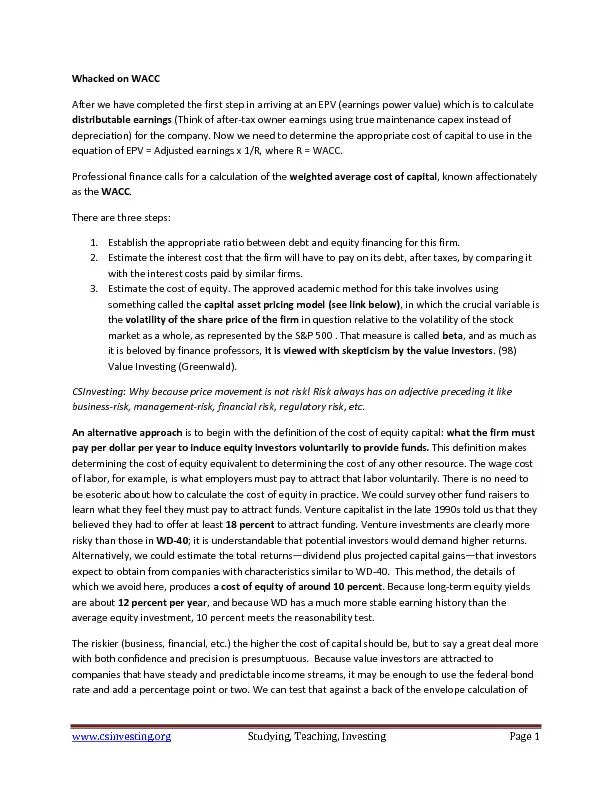PDF-www.csinvesting.org
Author : alexa-scheidler | Published Date : 2016-08-24
Studying Teaching Investing Page 1 Whacked on WACC After we have completed the first step in arriving at an EPV earnings power value which is to calculate distributable
Presentation Embed Code
Download Presentation
Download Presentation The PPT/PDF document "www.csinvesting.org" is the property of its rightful owner. Permission is granted to download and print the materials on this website for personal, non-commercial use only, and to display it on your personal computer provided you do not modify the materials and that you retain all copyright notices contained in the materials. By downloading content from our website, you accept the terms of this agreement.
www.csinvesting.org: Transcript
Studying Teaching Investing Page 1 Whacked on WACC After we have completed the first step in arriving at an EPV earnings power value which is to calculate distributable earnings Think of after. Lec ture #8 L E AP S teaching/studying/investing Page 1 March 16, 2005 E di tor : The professor and Great Investor (“GI”) views options in a unique way to carve out precise risk and
Download Document
Here is the link to download the presentation.
"www.csinvesting.org"The content belongs to its owner. You may download and print it for personal use, without modification, and keep all copyright notices. By downloading, you agree to these terms.
Related Documents

